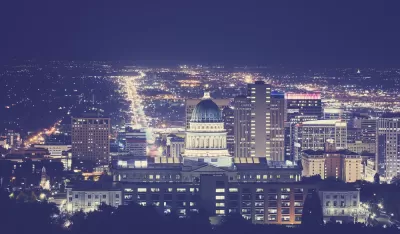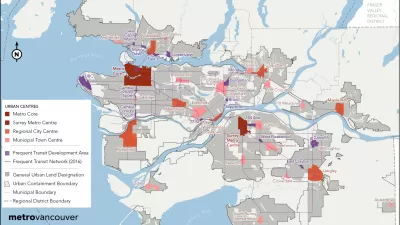A 20-year, voluntary, bottom-up, large-scale, long-term planning effort in Utah has managed to bridge the divide between Mormons and non-Mormons, environmentalists and mining interests, farmers and city-dwellers.

Collin Woodward, a contributing editor with Politico Magazine and author of five books, writes about the 20-year land use planning effort undertaken in the state of Utah. The effort was intended to conserve water use, promote clean air and avoid the destruction of open spaces by slashing housing lot sizes, encouraging higher-density development, and imposing new taxes to build a light rail network and commuter rail system from scratch.
Using a "voluntary, bottom-up, large-scale and long-term—has clicked with the people of a conservative state and bridged historic divisions between Mormons and non-Mormons, environmentalists and mining interests, farmers and city-dwellers. And it came out of an unlikely gathering 30 years ago. Some of the most influential figures in a staid and recession-shocked state came together at a dude ranch owned by the man who was the model for American fiction’s most famous bulldozer-destroying environmental activist."
Growth continues in Utah, writes Woodward: "[T]he challenge ahead is daunting. Last month, the Census Bureau revealed Utah was the fastest growing state in the country, and the majority of the growth is due to its people having the nation’s highest birth rate. Projections show Utah will nearly double its population to 5.4 million by 2050, further compounding the challenge of maintaining the quality of life its people treasure. So in 2013, current Governor Gary Herbert asked Envision Utah to do their magic again, only this time working statewide to determine what Utahns want the place to look like at mid-century."
FULL STORY: How Mormon Principles and Grassroots Ideals Saved Utah

Manufactured Crisis: Losing the Nation’s Largest Source of Unsubsidized Affordable Housing
Manufactured housing communities have long been an affordable housing option for millions of people living in the U.S., but that affordability is disappearing rapidly. How did we get here?

Americans May Be Stuck — But Why?
Americans are moving a lot less than they once did, and that is a problem. While Yoni Applebaum, in his highly-publicized article Stuck, gets the reasons badly wrong, it's still important to ask: why are we moving so much less than before?

Using Old Oil and Gas Wells for Green Energy Storage
Penn State researchers have found that repurposing abandoned oil and gas wells for geothermal-assisted compressed-air energy storage can boost efficiency, reduce environmental risks, and support clean energy and job transitions.

Updating LA’s Tree Rules Could Bring More Shade to Underserved Neighborhoods
A new USC study finds that relaxing Los Angeles’ outdated tree planting guidelines could significantly expand urban tree canopy and reduce shade disparities in lower-income neighborhoods, though infrastructure investments are also needed.

California's Canal Solar Projects Aim to Conserve Resources and Expand Clean Energy
California’s Project Nexus has begun generating electricity from solar panels installed over irrigation canals, with researchers and state agencies exploring statewide expansion to conserve water and boost clean energy production.

HHS Staff Cuts Gut Energy Assistance Program
The full staff of a federal program that distributes heating and cooling assistance for low-income families was laid off, jeopardizing the program’s operations.
Urban Design for Planners 1: Software Tools
This six-course series explores essential urban design concepts using open source software and equips planners with the tools they need to participate fully in the urban design process.
Planning for Universal Design
Learn the tools for implementing Universal Design in planning regulations.
Heyer Gruel & Associates PA
City of Moreno Valley
Institute for Housing and Urban Development Studies (IHS)
City of Grandview
Harvard GSD Executive Education
Salt Lake City
NYU Wagner Graduate School of Public Service
City of Cambridge, Maryland




























